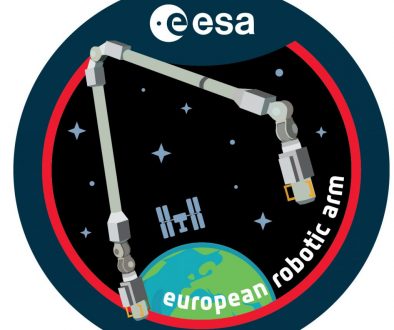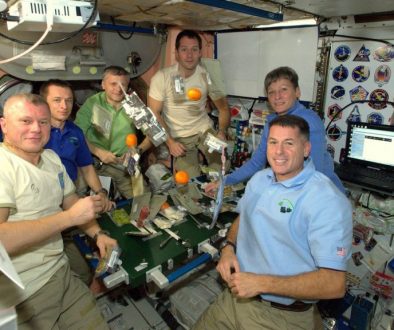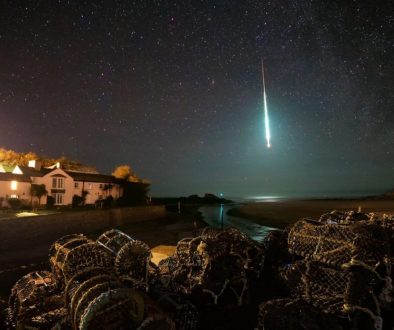Going Up: SPHEREx and PUNCH

Going Up: sharing a ride to look at our sun and at distant galaxies
On March 6th, 2025 – if all goes as planned – two missions will share a ride on a Falcon 9 Block 5. They will share similar orbits but with very different intentions. They will both find their homes on a sun-synchronous low earth orbit. That means they will both circle our Earth along its day-night (or terminator) line. One, because that way it can constantly observe the sun. The other to constantly look away from the sun while remaining close to home. The one looking at the sun is called PUNCH, the one looking away SPHEREx.
SPHEREx

Scientists launching things into love their acronyms. So, of course, they would call their telescope staring into deep space to look for traces of water, carbon dioxide, carbon monoxide, and other key ingredients for life frozen on the surface of interstellar dust grains in the clouds of gas and dust where planets and stars eventually form SPHEREx. That is meant as a short description of the mission, as it is derived from it being a Spectro-Photometer for the History of the Universe, Epoch of Reionization and Ices Explorer. So it could also have been called SPUERIEx – but that would have been spurious and made it sound vaguely Swiss.
To catch these reservoirs of ice, bound to small dust grains, in interstellar space, it will look outward from low-Earth orbit, circling the planet at an altitude of 700km along its day-night (or terminator) line. These reservoirs are where most of the water in our universe forms and resides. Additionally, the water in Earth’s oceans as well as those of other planets and moons in our galaxy likely originated in such locations.
During the 25 months of its planned mission, it will survey the entire sky every six months, collecting data on more than 450 million galaxies along with more than 100 million stars in the Milky Way. That way, it will create a map of the entire sky in 102 different color bands, far exceeding the color resolution of previous all-sky maps. It also will identify targets for more detailed study by future missions, such as NASA’s James Webb Space Telescope and Wide Field Infrared Survey Telescope.
SPHEREX is a Caltech and JPL mission, and Dr. Jamie Bock is the principal investigator.
The data they collect will be publicly available. So if you want to read more about this mission, see more pretty pictures and maybe take a look at the data, JPLs page and the SPHEREx mission website at Caltech should have everything you desire. And there is of course a Wikipedia page for the mission as well.
PUNCH
And now the weather – space weather. The Polarimeter to Unify the Corona and Heliosphere – PUNCH – mission is a small constellation of four suitcase-sized satellites that will also be hoisted to a Sun-synchronous, low Earth orbit by said Falcon 9. There they will fly at 570 km altitude along the day-night (terminator) line, giving them a continuous view of the sun.
The four spacecraft are synchronized to serve as a single “virtual instrument”. One will look at the sun, while the others will look to the side of the sun. Every four minutes, each will collect three raw images through three different polarizing filters, plus a clear (unpolarized) image every eight minutes, to help calibrate the polarized images. This will create a composite movie of the interactions between the sun’s corona and the interstellar medium, look at the dynamics of the heliosphere that creates, and will also be able to routinely track coronal mass ejections.
All this will help us better understand and predict solar storms – which is important for protecting our astronauts, our satellites, and power grids.
The data will be downlinked multiple times a day via ground-based antennas managed by the Swedish Space Corporation (SSC), who will send the data to the mission operations center at SwRI in Boulder, Colorado sharing it with the science operations center at SwRI and with the world. Because the data will be available to the public at the same time it is available to the science team. All PUNCH data will be published through the Solar Data Analysis Center at NASA’s Goddard Space Flight Center in Greenbelt, Maryland, ensuring open access to the scientific community and public.
Craig Deforest is the PUNCH Principal Investigator, at SwRI (Southwest Research Institute). The mission blog is here and of course, there is a Wikipedia page
PUNCH is up and mission controllers for PUNCH (Polarimeter to Unify the Corona and Heliosphere) have received full acquisition of signal from the four small satellites, indicating that they are functioning normally and at full power.




